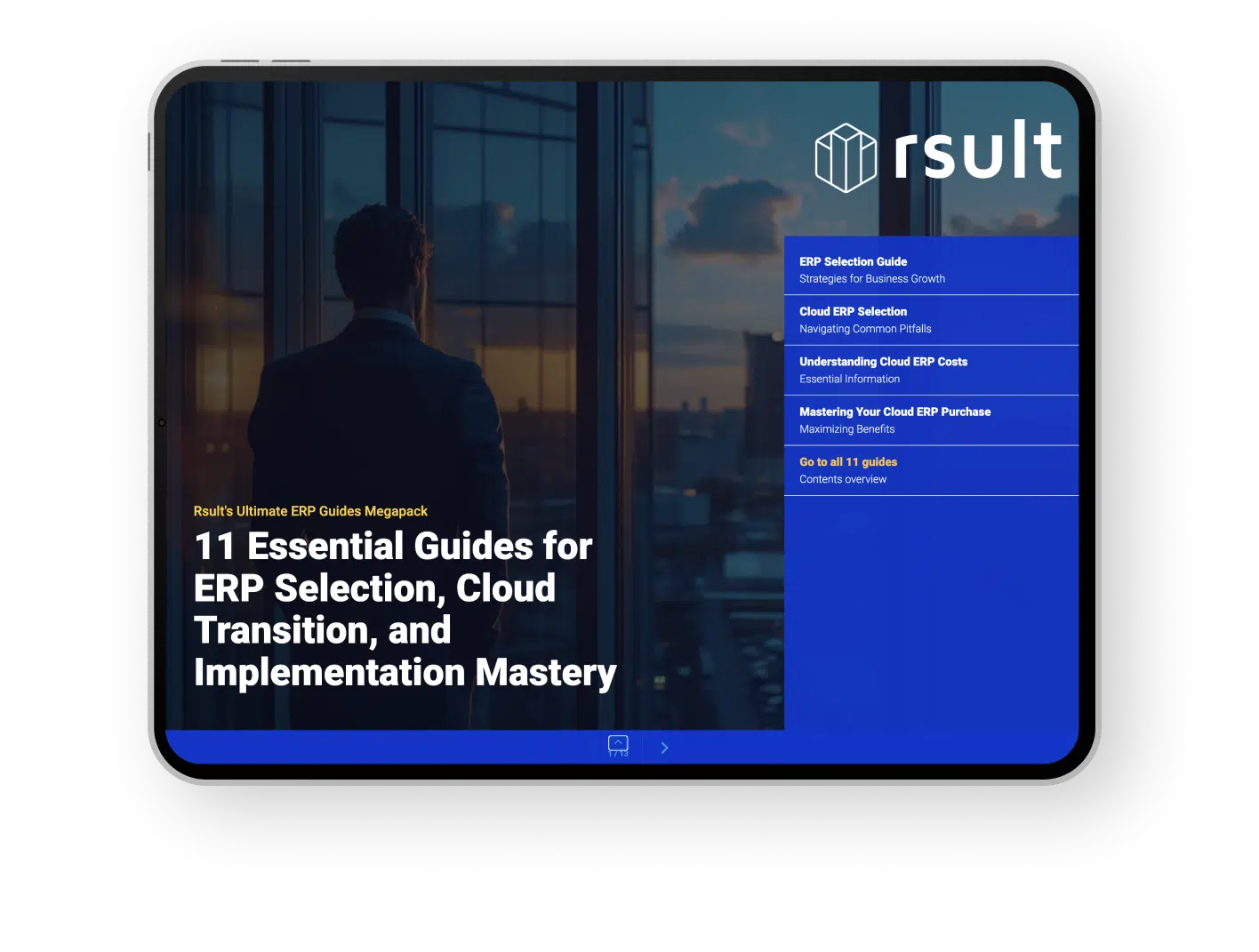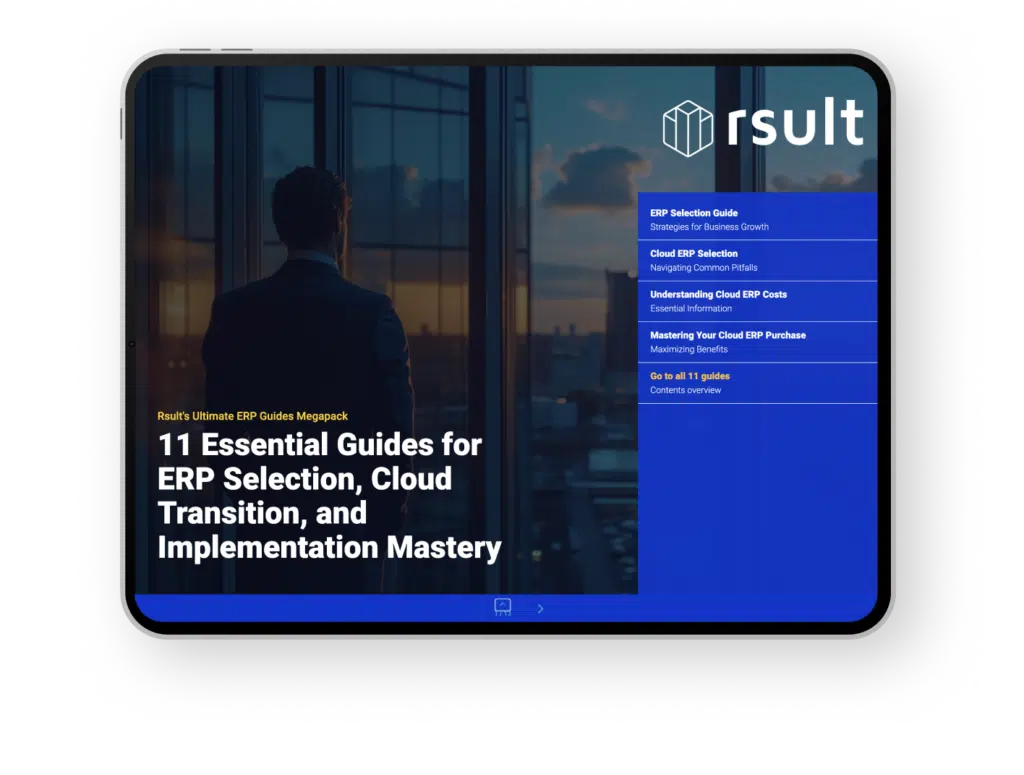Navigating the complexities of enterprise resource planning implementation (ERP implementation) can be a daunting task for any business. Yet, it remains a crucial stepping stone towards streamlining operations, increasing efficiency, and paving the way for expansion. Implementing ERP systems isn’t about merely setting up software; it’s a transformative journey that requires meticulous planning, strategic execution, and continuous optimization. In this pursuit, businesses must understand the necessity of a well-designed ERP software deployment to realize the full spectrum of benefits offered by these powerful tools.
Key Takeaways
- An ERP system offers a unified platform to manage all business operations, leading to enhanced productivity and strategic efficiency.
- Successful ERP software deployment necessitates alignment with the company’s unique processes, demands, and goals.
- A comprehensive planning and evaluation phase is critical to shaping the ERP implementation to fit the business’s specific needs.
- ERP implementations can drive growth and scalability in businesses by facilitating better decision-making and process optimization.
- As technology evolves, including AI and machine learning, ERP systems adapt to offer even greater intelligence and visibility across departments.
Understanding the Essentials of ERP Implementation
The journey towards a successful ERP implementation begins with a crystal-clear grasp of its enormous potential to transform organizational processes. An ERP system integration does not happen overnight; it is a progression of strategic steps involving the meticulous merging of various operational functions—accounting, finance, distribution, and more—into a cohesive system. Through its multifaceted modules, an ERP system serves as a linchpin for transparency and seamless cooperation within a company.
Recognizing an ERP implementation as a strategic investment is paramount. True operational efficiency springs from such an understanding, compelling businesses to sift through the vast array of software options and find the one that aligns with their complex needs.
| ERP Project Management Phase | Key Activities | Outcomes |
|---|---|---|
| Initiation | Identify stakeholders, define goals | Project scope and objectives established |
| Planning | Create a roadmap, allocate resources | Detailed project plan with milestones |
| Execution | Software customization, data migration | Functional ERP system tailored to business needs |
| Monitoring & Control | Track progress, quality assurance | Adjustments made to stay on track, high-quality delivery |
| Closure | Finalize implementation, gather feedback | Successful deployment, ready for operational use |
A structured approach to ERP project management is the backbone of the process. It ensures a symbiotic relationship among stakeholders, leading to consensus and collaborative effort. The migration of legacy data into the new ERP infrastructure requires careful planning to avoid any loss of information, while customization should aim to deliver a tailored solution that embraces and reinforces existing business practices.
Delving into the intricate details of each module and ensuring their compatibility with your organizational operations is essential. Rigorous testing must conclude the implementation phase, leaving no stone unturned in quality assurance. It’s through this painstaking attention to detail that an ERP initiative transforms from a mere technical exercise into a fundamental business enabler.
The shift towards a technologically integrated enterprise is inevitable in the digital age. Keeping pace with this shift by leveraging a successful ERP implementation can result in heightened efficiency and a robust advantage in the competitive marketplace. By understanding and adhering to these essentials of ERP implementation, organizations can achieve a smooth transition that not only aligns with their current procedures but also lays a solid foundation for future growth.
The Strategic Role of ERP in Business Efficiency
Implementing an ERP system is a transformational event for any business, underpinning the adoption of a comprehensive ERP rollout strategy. It is crucial in today’s fast-paced market to maintain a competitive edge by enhancing overall business efficiency through effective enterprise resource planning implementation. The journey begins with meticulous ERP vendor selection, ensuring the chosen system aligns with business goals and operational needs.
Key Benefits of Deploying an ERP System
ERP systems are cornerstone investments for companies looking to improve their operational efficiency. When deployed with strategic forethought, they offer a multitude of benefits that can revamp core business functions. These include streamlining processes, which reduces the time consumed on manual tasks and potentially leads to significant cost savings. ERP provides a unified platform that can yield substantial gains in productivity and bolster inter-departmental collaboration.
Key decision-makers gain a vantage point with quicker access to accurate and comprehensive data, bolstering informed decisions. Another noteworthy advantage is the improvement in customer service. With the quicker retrieval of customer histories and a holistic view of the customer lifecycle, service teams can anticipate needs and address issues more effectively.
Moreover, compliance is another area where ERP systems prove invaluable. With built-in compliance management capabilities, businesses can ensure they adhere to the prevailing industry regulations and standards without unnecessary complication.
How ERP Touches Every Aspect of Your Operation
From the ground floor to the executive suite, enterprise resource planning touches every aspect of a company’s operation. It’s the cornerstone that supports both versatility and scalability, allowing businesses to navigate and adapt to market changes and growth opportunities seamlessly. With ERP at the helm, managing supply chains, controlling inventory, and optimizing operations become integrated, systematized processes.
A centralized database lies at the ERP’s core, holding the key to improved data quality. This data is not only more accurate but also more accessible, enabling better performance analysis and insights that drive informed business decisions. As a result, it’s clear that a robust ERP rollout strategy, supported by a discerning ERP vendor selection and a thoughtful enterprise resource planning implementation, is indeed a strategic imperative for modern-day business efficiency.
Selecting the Perfect ERP Vendor for Your Business
Making the right decision in ERP vendor selection can set the foundation for a successful ERP software deployment. As businesses evolve, the need for a reliable ERP provider grows, one who not only understands the intricacies of the software but also the nuances of the industry in which the business operates. A systematic approach is advised for businesses to ensure they choose a provider that offers the right mix of quality service and comprehensive software solutions aligned with their specific needs.
Below are key steps to consider during the selection process:
- Evaluate the ERP vendor’s track record and reputation in the industry.
- Assess the scalability and customization options of the ERP software.
- Understand the level of support and training provided by the vendor.
- Examine the compatibility of the ERP system with existing business processes.
- Check for user reviews and case studies about previous ERP deployments by the vendor.
Alongside these steps, businesses must also account for their growth projections and future needs. It’s imperative that the ERP system is agile enough to grow and adapt with the company, without incurring excessive costs or requiring frequent replacements.
| Consideration | Why It Matters |
|---|---|
| Vendor Expertise | To ensure deep industry knowledge and effective problem-solving capabilities. |
| Cost and ROI | To maximize financial efficiency and gain long-term benefits. |
| ERP Customization | To tailor the system to specific business needs and workflows. |
| Post-Deployment Support | For continual assistance and system optimizations post-deployment. |
| References and Case Studies | To gauge real-world effectiveness and customer satisfaction. |
Finally, involving key stakeholders in the ERP software deployment process plays a crucial role in the selection of an ERP vendor. By doing so, businesses can ensure that the chosen solution caters to every aspect of the company’s operations and gains the necessary internal support for effective integration and utilization.
Preparing Your Business for ERP Deployment
Embarking on an ERP software deployment is a journey that requires meticulous preparation and strategic planning. To ensure a seamless ERP system integration, you need to begin with a comprehensive needs assessment. This critical analysis will pinpoint the functional areas your ERP will enhance, helping tailor the software to your unique business processes. But preparation extends beyond internal analysis; it involves securing the support of every layer of your organization. Achieving stakeholder buy-in not only promotes project engagement but also fosters a collaborative environment that is essential for the success of the deployment.
Creating a strategic deployment plan is your next pivotal step. This plan should detail the project timeline, outline the responsibilities of each team member, and set clear milestones that signal progress. The following table illustrates the components of an effective deployment plan:
| Stage | Main Objective | Expected Outcome |
|---|---|---|
| Needs Assessment | Identify business processes that the ERP will improve | A list of ERP requirements tailored to business needs |
| Stakeholder Engagement | Secure support and involvement from key stakeholders | Streamlined decision-making and resource allocation |
| Resource Planning | Allocate budgets and personnel for implementation phases | Optimal resource utilization for maximum efficiency |
| Data Migration Strategy | Ensure smooth and secure transition of data to the new ERP | Preserved data integrity and minimal operational disruption |
Resource allocation, another critical component, should be considered with equal importance. Ensuring that each aspect of your ERP deployment has sufficient resources—in terms of time, budget, and personnel—can prevent unexpected bottlenecks that may otherwise arise.
- Establish clear criteria for data migration to safeguard the integrity and security of your data.
- Plan for contingencies and allow flexibility in your timeline to accommodate unforeseen challenges.
- Maintain clear communication channels to keep all parties informed throughout the ERP system integration process.
By thoughtfully preparing your business for ERP software deployment, you’re setting up your organization for a successful transformation that will streamline operations and strengthen your market position.
Best Practices in ERP Project Management
Implementing an ERP system can be a complicated and extensive endeavor, requiring meticulous planning and management. To achieve a successful transition, it’s essential to follow best practices ERP implementation strategies. A cornerstone of these practices is detailed project management – a fundamental aspect that can make or break the success of the initiative.
ERP project management focuses on a range of strategic actions; from scoping to monitoring the ongoing application of the system. It goes beyond simple oversight, encompassing the management of resources, timelines, and stakeholder expectations.
- Comprehensive Implementation Planning: Start with a well-defined project scope that includes clear objectives, timelines, and milestones. Each stage should be thoroughly mapped out, from system selection to post-launch support.
- Effective Communication: Keeping all stakeholders informed and engaged is crucial. This builds trust and ensures that everyone is on the same page in regards to project status and expectations.
- Change Management: An ERP system will transform various aspects of operation. Effective change management will be critical in helping staff adapt to new processes and technologies.
In-depth training for end-users through sandbox environments simulates practical, hands-on experience with the ERP system before it goes live. This proactive approach allows users to familiarize themselves with the system’s features and functionalities, ensuring smoother adaptation post-implementation.
| ERP Project Phase | Key Activities | Best Practice Tips |
|---|---|---|
| Initiation | Define goals, establish the project team | Set realistic expectations and involve key stakeholders |
| Planning | Create a detailed project plan, define KPIs | Use a centralized tool for project tracking and communication |
| Execution | Develop system configurations, conduct data migration | Follow a phased approach to minimize disruptions |
| Monitoring | Track progress, adjust plans as needed | Implement a robust system for issue tracking and resolution |
| Closure | Finalize implementation, gather feedback | Conduct retrospective meetings to learn and improve future projects |
Adhering to best practices in ERP implementation and maintaining diligent ERP project management not only facilitates a smoother launch but also ensures the long-term success and scalability of the system within an organization.
Seamless ERP System Integration Strategies
Adopting an ERP system integration strategy is essential for companies seeking to make the most of their enterprise resource planning systems. Aligning the implementation with business operations is not just commendable but critical for a successful ERP implementation. In this context, businesses face the classic dilemma of customization versus standardization—each serving unique ends of the spectrum.
Customization vs. Standardization
When it comes to the integration of an ERP system, striking the right balance between customization and standardization is imperative. Tailoring your ERP system ensures that specific features match unique business requirements, providing a structured pathway to operational excellence. Conversely, standardization simplifies processes, reduces costs, and fosters a streamlined approach to operations. Organizations must weigh these options to determine the optimal mix for their ERP rollout strategy.
Aligning ERP With Business Workflows
Alignment of the ERP with existing business workflows is a step towards ensuring the system adds value from the get-go. It involves configuring the ERP system’s modules and features to optimally support and enhance current operations, all the while maintaining an eye on future scalability and adjustments.
A successful integration embraces the organizational culture, endorsing a user-centric design that seamlessly fits into work practices. Understanding the intrinsic details of day-to-day operations provides a template for this alignment, which is both practical and sustainable long-term.
| Integration Aspect | Customization | Standardization |
|---|---|---|
| System flexibility | High | Moderate |
| Implementation Cost | Variable based on complexity | Generally lower |
| Upgrade and Maintenance | More resource-intensive | Easier to manage |
| User Adoption | Can be accelerated with tailored features | Streamlined with standard processes |
| Return on Investment (ROI) | Potentially high, but variable | Consistent over time |
Successfully integrating an ERP system is an intricate endeavor that necessitates thoughtful planning and execution. As business landscapes evolve, the agility offered through adept ERP integration becomes a lever for competitive advantage. Here, the expertise and foresight put into crafting an ERP rollout strategy can help ensure seamless operation and enduring success.
Ensuring Success Through Training and ERP Rollout
A successful ERP implementation is as much about strategy as it is about technology. It requires an ERP rollout strategy that focuses on thorough training and support for the people who will use the system every day. People are the backbone of any successful ERP initiative, so investing in proper education and tools for them is paramount.
An effective ERP rollout strategy typically has multiple phases, each focused on different end-goals. During these phases, continuous learning opportunities should be offered to ensure comfort with the new system, leading to a successful ERP implementation.
- Initial Training – Offer an overview of the new ERP system and show how it differs from the old processes.
- Role-Specific Sessions – Conduct sessions that are tailored to the roles and responsibilities of different employees.
- Continued Education – Create a plan for ongoing training to cover updates and continuous improvement processes.
- Feedback Mechanism – Implement a system for employees to share feedback which can be used to improve training methods and the ERP system itself.
A company’s ERP rollout strategy needs to be robust enough to deal with any potential hiccups that could occur while transitioning to a new system. Staging the rollout can make this process smoother, starting with a pilot phase followed by a phased company-wide rollout.
| Rollout Phase | Objective | Activities |
|---|---|---|
| Pilot | Test in a controlled environment | Use real data to verify system functionality with a select user group. |
| Departmental | Expand usage to departments | Implement system department by department to minimize impact on entire company at once. |
| Company-Wide | Full implementation | After successful departmental rollouts, open up the system to the whole organization. |
| Post-Implementation | Monitor and Optimize | Collect feedback and monitor system performance for continuous improvement. |
Quality assurance is another critical element in a successful ERP implementation. It’s critical to regularly evaluate the system against the organization’s standards and requirements to ensure that the ERP system is delivering the expected benefits and performance.
Metrics for a Successful ERP Implementation
To truly gauge the success of an ERP implementation, specific metrics should be established that provide clear insights into how the system is improving business operations. A successful ERP implementation is one where the benefits clearly outweigh the investment costs, enhancing the company’s overall performance and productivity.
These metrics must be reflective of core business objectives and should be tracked consistently post-implementation to ensure continuous improvement. Let’s discuss some of the critical performance indicators that embody best practices ERP implementation.
- Productivity Gains – A fundamental aim of any ERP implementation is to automate routine tasks and streamline operations to save time and effort. Evaluating the increase in tasks completed over a given time frame can reveal productivity improvements.
- Data Management Efficiency – The ease with which data can be entered, accessed, and analyzed is a clear indicator of a successful ERP implementation. Faster data handling and retrieval translate into efficient processes.
- Compliance Adherence – Maintaining regulatory compliance is simpler with an ERP system. By tracking how well the system helps in meeting industry and legal standards, businesses can measure success in this crucial area.
- Customer Satisfaction Levels – Enhanced customer service is a byproduct of efficient systems. Measuring customer satisfaction before and after ERP deployment can indicate the system’s impact on the customer experience.
- Inter-departmental Communication Quality – An effective ERP system should enable better communication and collaboration between departments. Metrics based on response times and the number of collaborative projects can be insightful.
- Decision-making Speed – How quickly decisions are made post-ERP implementation is a measurable outcome. Shorter decision times often mean that the relevant data is readily accessible and processes are well-defined.
By rigorously monitoring these indicators, businesses can determine whether their ERP system is delivering on its promise, ensuring that any adjustments or re-alignments needed can be identified and implemented. This ongoing refinement process is vital for sustaining continuous improvement and business growth.
Conclusion
In the quest for enhanced efficiency and scalability, businesses face the pivotal task of ERP implementation. This process, far more than just a software upgrade, is a cornerstone of enterprise digital transformation. The strategic deployment of an ERP system unlocks the potential for streamlined operations and the chance to foster a more agile and responsive business environment. As companies wade through the intricacies of vendor selection, system integration, and user training, the importance of a well-orchestrated approach becomes abundantly clear.
From the initial selection of a fitting ERP software deployment to the final stages of going live, each step is a critical component of the big picture. Businesses that meticulously prepare, aligning their unique needs with the system’s capabilities, lay a solid foundation for success. Effective project management, a commitment to thorough training, and the intelligent integration of workflows help assure not just a successful ERP rollout but an ongoing improvement in corporate functions.
Moreover, measuring the success of ERP software deployment through concrete metrics is what ultimately pinpoints the value brought to the table. Monitoring productivity, data management efficiency, and customer satisfaction offers actionable insights, ensuring that the investment keeps yielding dividends. For companies aiming at future-proofing their operations, a well-executed ERP implementation is not just an IT initiative; it’s a strategic move propelling them toward becoming a smarter, more connected enterprise in a digital-first world.






